I’m not a huge fan of multi-purpose vehicles (MPV), however, I’m not the intended target audience: I don’t have a big family and I don’t need the the extra space that an MPV like the Mitsubishi Xpander provides. If I were a cyclist that needed to move my bike around in the car, the Xpander would likely look a lot different to me.
That being said, if I was in the market for an MPV, the Mitsubishi Xpander would likely come up quite high on my list. I will expand on the reasons why later but a major notch in its belt is the fact that it is one of the more stylish looking MPVs available and it has a fair amount to offer for the price it comes in at.
The Mitsubishi has plenty to offer its drivers. It comes in at a lower price than an SUV while still offering more space and practicality. Drivers with bigger families can comfortably fit those families into the vehicle and others can transport bulkier items around without the kind of hassles that an SUV would present. From a practical point of view, it just makes sense.
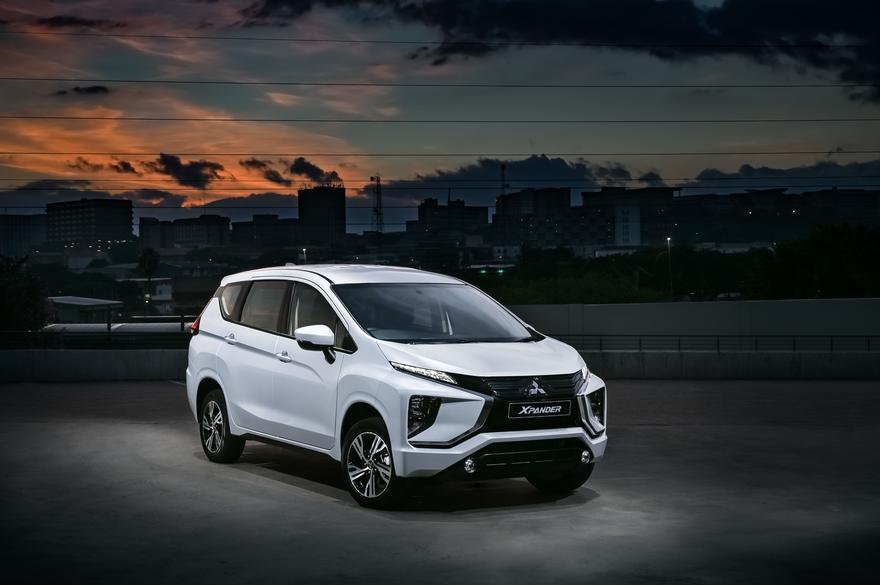
The drive
Sometimes I found the Mitsubishi Xpander to be a bit sluggish in its drive. It is definitely not as responsive as what I would like it to be and this was just with one person in the car. I never had the chance to drive it fully loaded, which is unfortunate because I would like to see its performance under these conditions. I honestly struggle to see it performing energetically with seven people in the car and/or a full load of luggage.
I do have to give the Mitsubishi Xpander some redemption in that this is not an uncommon experience when it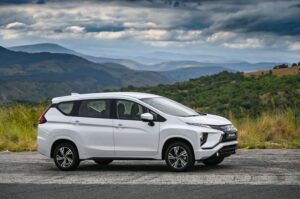 comes to MPVs. I have yet to find one that will carry a full load of people and luggage without struggling at all.
comes to MPVs. I have yet to find one that will carry a full load of people and luggage without struggling at all.
The Xpander comes with a 1.5 litre engine. According to Mitsubishi, drivers can expect 77 kW of power and 141 Nm of torque. It has either a 4-speed automatic transmission and a 5-speed manual transmission. The CVT was also a bit disappointing, not unusual, but definitely disappointing.
The claimed fuel consumption is 7L/100km. I’m unable to compare this to our consumption because when I scrolled through the vehicle information section, the fuel consumption was disappointingly empty. It was likely just a setting issue, that I was not aware of until it was too late. If this downside is not limited to that vehicle alone, I do believe it should rather come ready and set up for the driver.
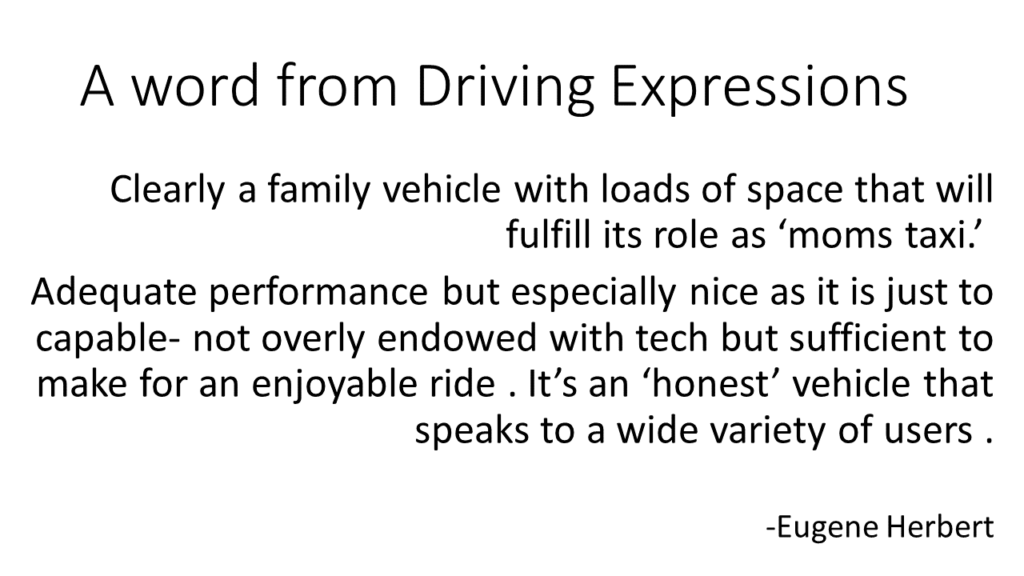
The design
The Mitsubishi Xpander really deserves kudos in terms of its design. It is only from the side that you can see that station wagon look, which is not popular in South Africa, otherwise effort was put into making it look as sporty as possible. If you looked at it from the front only and didn’t know it was an MPV, you could actually be forgiven for thinking it is an SUV. Mitsubishi say they aim to combine the versatility and practicality of an MPV with the sporty looks of an SUV.
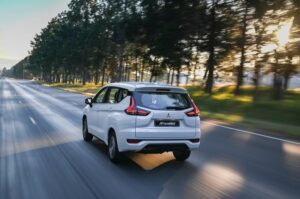 Some of the new improvements to the Mitsubishi Xpander include a new face with a black central area which enhances the Mitsubishi Dynamic Shield Design meant to protect its occupants and the vehicle. This also adds a hint of sportiness and performance.
Some of the new improvements to the Mitsubishi Xpander include a new face with a black central area which enhances the Mitsubishi Dynamic Shield Design meant to protect its occupants and the vehicle. This also adds a hint of sportiness and performance.
Other additions include 15-inch alloy wheels in the manual model or 16-inch in the automatic, wide flared fenders to create a tougher look, daytime running lights and L-illuminated LED tail lights that touch the tailgates. Lastly, the ground clearance is now 205 millimetres which is a noticeable difference to previously.
Take a step inside
The interior does not appear cheap and in need of better materials as many MPVs often do and nor is it overly fancy and expensive. It sits on that happy medium, with materials that you can rely on for durability without sounding or looking cheap and a design that will outlast an ultra-modern one.
and expensive. It sits on that happy medium, with materials that you can rely on for durability without sounding or looking cheap and a design that will outlast an ultra-modern one.
An area that is common in MPVs is that it sounds and even feels cheap in the interior when you drive. With the Xpander there is a definite difference and a definite superiority compared to many other vehicles in the segment and it definitely has the ruggedness of an SUV.
One area where the Mitsubishi Xpanda excels particularly well is in its size. If you lower both rows of seats at the back, you have enough space in which to easily fit a bicycle. The third row traditionally has a reputation for being what I call an ‘use in emergencies only’ row because it’s so small and few people can actually sit there comfortably. In the Mitsubishi Xpander, there is a fair amount of room to fit. I wouldn’t recommend a 6-foot male but children and small adults will fit comfortably without their knees being level with their ears.
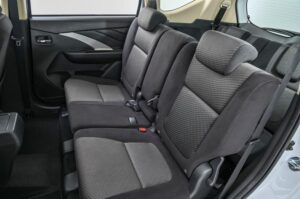 The Mitsubishi Xpander is not just a car that simply squishes in an extra row of seats but creates genuine space and comfort for bigger families. The comfort of all passengers is accounted for with the third row of seats even having their own drinks holders. Above the second row is an AC controller for the entire rear of the car. There is also a separate light, electric windows throughout the car, 12V power sockets for every row of seating and storage departments under each row of seats. Definitely not just a car designed for the driver’s comfort.
The Mitsubishi Xpander is not just a car that simply squishes in an extra row of seats but creates genuine space and comfort for bigger families. The comfort of all passengers is accounted for with the third row of seats even having their own drinks holders. Above the second row is an AC controller for the entire rear of the car. There is also a separate light, electric windows throughout the car, 12V power sockets for every row of seating and storage departments under each row of seats. Definitely not just a car designed for the driver’s comfort.
Throughout the car there are extra cubbyholes and extra spaces that will prove ideal for families. It’s clear Mitsubishi designed this vehicle with families in mind adding extra compartments by passengers, under the dash, a large cubby between the passenger and driver seats and various other spaces that will be useful.
The Mitsubishi Xpander also has some of the tech that drivers in this category would definitely want from their cars.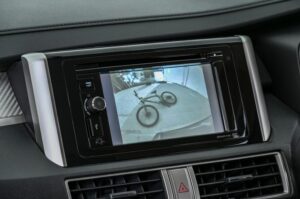 This includes push button start and reverse cameras as well as a full touchscreen infotainment system.
This includes push button start and reverse cameras as well as a full touchscreen infotainment system.
They are also a couple of things that I was not sure about with the Xpander. Firstly, the USB port is placed inside the front cubbyhole. From a previous experience, I knew it was there but I also remember how I was completely baffled by that particular placement. In a way, I suppose, it would prevent the use of your phone whilst driving but I don’t use my phone while driving nonetheless I do like to have it within hands reach in an emergency and I simply don’t like a USB port inside a cubbyhole.
I think its particularly exasperating because there is a perfect space for a phone under the infotainment system and a little square above it which one could be forgiven for trying to open because it looks so similar to the usual port positioning. So why was the cubbyhole selected when there is an ideal (and can I say better) placement for it?
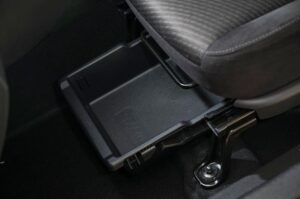 Additionally, the centre cubbyhole between the driver and passenger has a cover that when you open it, it comes right off. It almost seems like it’s broken (maybe it was?) and if this was a specific design intention it possibly makes the car look cheaper for such a minor oversight.
Additionally, the centre cubbyhole between the driver and passenger has a cover that when you open it, it comes right off. It almost seems like it’s broken (maybe it was?) and if this was a specific design intention it possibly makes the car look cheaper for such a minor oversight.
Something else, particularly in South African context, that seem like not the best choice was to neglect a backboard for the boot. In some seven-seaters it’s not a huge deal because you can’t really see into the boot. In the case of the Xpander however, you have quite a clear view into the boot. Additionally, in a vehicle that could likely be used as a five seater more often than a seven, a removable backboard does seem necessary.
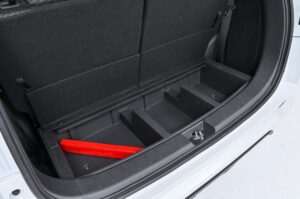
On another note, which is one of the first times I’ve seen this in an MPV, is that you can lift up the bottom board of the boot to access a small storage area for valuable items. This is big enough for a laptop and a handbag, possibly even in there at the same time depending on the size, but anything bigger than that is unlikely to fit. It does, however, address an essential part of an important need.
Safety
As a vehicle intended for families the safety features of the Mitsubishi Xpander are essential. It comes with an impressive complement including driver and passenger airbags, ABS with EBD, impact-absorbing structure at the  front end of the vehicle, ISOFIX child seat anchors and coming home and welcome lights. It also has a collision reinforced impact safety evolution body with side-impact bars.
front end of the vehicle, ISOFIX child seat anchors and coming home and welcome lights. It also has a collision reinforced impact safety evolution body with side-impact bars.
If you are in the market for a vehicle for a larger family or you need space for various other purposes that an SUV may not necessarily give you, or which may be too expensive, the Xpander is likely one of the best choices in the MPV range
Good to know
The specs
Engine: 1.5 litre petrol engine
Transmission: 5-speed manual or 4-speed CVT
Power: 77 kW
Torque: 141 Nm
Claimed fuel efficiency: 7L/100km
Price: from R299 995
Warranties and service plans: Three-year/100 000km manufacturer’s warranty and a two-year/30 000Km service plan, includes a 15 000km/unlimited mileage roadside assistance
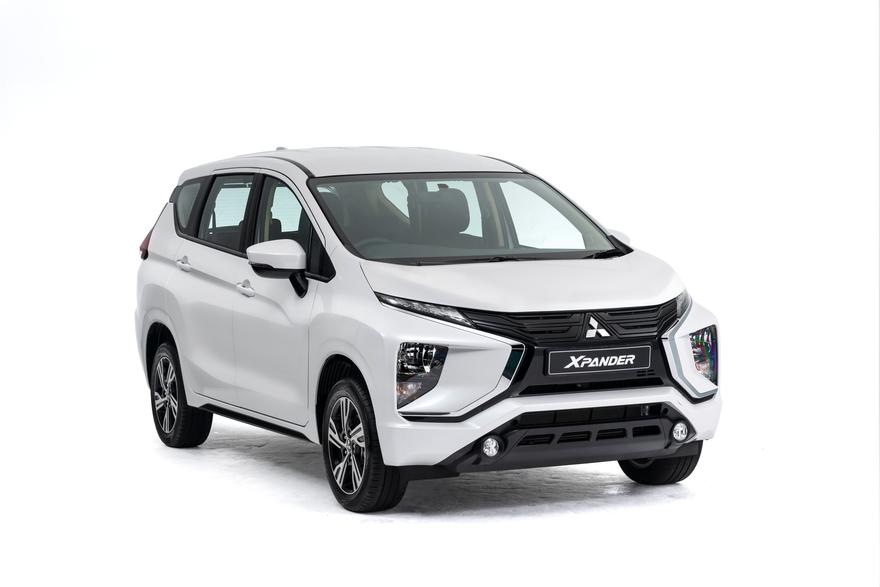
Read more MasterTests




